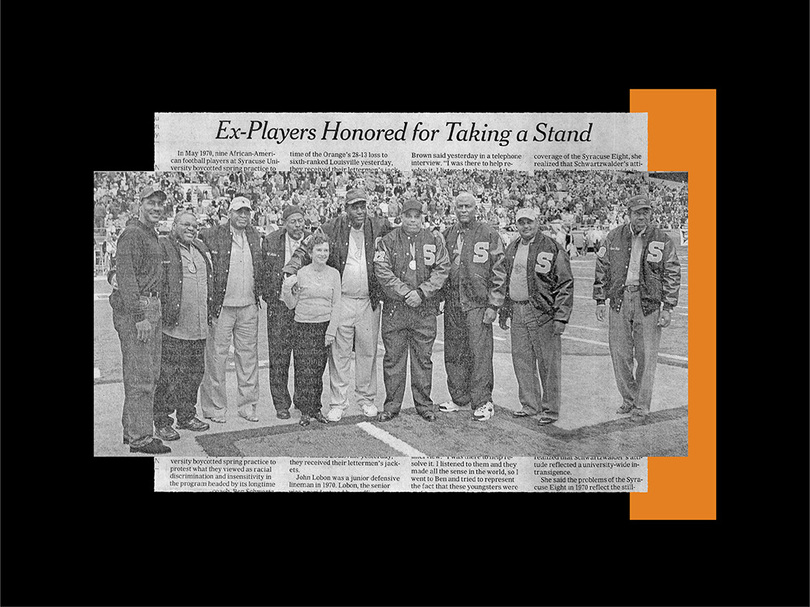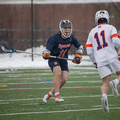In 2005, at the triennial Coming Back Together reunion for Black and Latino alumni, some Syracuse 8 members led a workshop and retold their story. In attendance was Hall of Famer and former Syracuse football star Art Monk, who graduated in 1980. He’d never heard of the Syracuse 8.
“So, when we told the story then, and hearing Art say that he didn’t know that happened here, that tells you exactly what occurred,” John Lobon said. “Nobody knew what happened because that’s how far it got buried.”
The reunion was the first step in uncovering their previously hidden history. Nancy Cantor, then the university’s chancellor, attended the reunion that year and had previously read about the Syracuse 8. She said then that SU should find a way to apologize.
One year later, it did. Every member of the Syracuse 8, except John Godbolt, walked onto the Carrier Dome turf at halftime of a late October game and received their letterman jacket for the first time. Cantor presented them a formal apology and the Chancellor’s Medal — the university’s highest honor. Jim Brown spoke, calling it “one of the greatest nights I have been involved in.”
“It was a beautiful experience,” Ron Womack said. “I will never forget that. It helped mend some of the pain. It almost was like we felt validated, that we did belong to Syracuse … We went from troublemakers to heroes.”
The university’s apology healed the scars left by the “hurtful chapter” of their boycott and SU’s subsequent neglect, Womack said. To this day, Womack wears his graduation ring, which has a picture of a football player on one side and his major, education, on the other. He shows it off to his students in Minnesota while passing on the lessons of the 1970 boycott.
So, when we told the story then, and hearing Art say that he didn't know that happened here, that tells you exactly what occurred. Nobody knew what happened because that's how far it got buried.John Lobon, Syracuse 8 member
Since 2006, the Syracuse 8 has been chronicled in David Marc’s book “Leveling the Playing Field: The Story of the Syracuse 8,” published by Syracuse University Press, in SU’s 150th anniversary book “Forever Orange” and in a Carrier Dome display.
The Syracuse 8 view their boycott as a renaissance, a return to SU’s founders’ mission of inclusion and opportunity for all, and they’re still trying to make SU better. In 2011, the Syracuse 8 started and endowed a scholarship fund for first-year Black or Latino students who’ve exhibited leadership skills and participated in community service during high school.
They consider their 1970 boycott a “catalyst” for social justice initiatives and increased diversity in the student body, administration and faculty, Greg Allen said. In fall 2020, they’ll be honored once again for the 50th anniversary at the 13th Coming Back Together. As of now, the reunion is still on despite the spread of COVID-19, and the Syracuse 8 will host a panel to retell their story.








